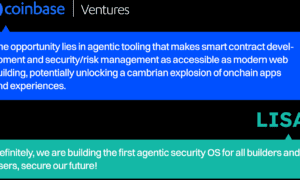Introduction
Technology is moving fast. Faster than most businesses are willing to admit. Whether it’s AI tools popping up overnight, cloud systems constantly updating, or cybersecurity risks evolving every week, it’s a lot to keep up with. For many companies, especially small to mid-sized ones, it can feel like you’re just catching your breath when the next wave of change hits.
Having the latest tools isn’t enough on its own. What really matters is making sure those tools actually work for your business. That’s where things get tricky. Without a clear plan or someone steering the ship, it’s easy to fall into a pattern of reacting to change instead of preparing for it. A new software looks promising? Great. But if it doesn’t integrate with your existing systems or your staff don’t know how to use it, the whole thing backfires.
This is exactly the kind of situation that benefits from strategic IT guidance. It goes beyond fixing tech when it breaks. It helps your business move confidently through constant digital change without getting lost in the noise.
What Rapid Tech Change Looks Like in Business Today
It’s easy to say tech is moving fast, but what does that mean day to day? For most businesses, it means your software is outdated six months after installing it. Your team finally learns one system, and another comes along promising better results. AI platforms like ChatGPT, constant updates from Microsoft or Apple, the shift to hybrid work, and ever-tightening data regulations—it all adds up quickly.
One of the most significant changes in recent years has been the shift to cloud-based platforms. They’re powerful, flexible, and constantly evolving. But with those benefits come new challenges. Updates roll out without warning, interfaces change, and suddenly your whole workflow needs rethinking. If you’re running multiple tools across departments, even one small change can throw things out of sync.
Then there’s cybersecurity. The threats are smarter, faster, and more targeted than ever. Small businesses in Australia are no longer flying under the radar. A missed patch or outdated firewall can turn into a significant data breach before you know it. That pressure to always be “on top of it” is exhausting, especially for teams that don’t have a dedicated tech staff.
When businesses try to keep up by reacting to each change, they burn out. Systems become patchy. Staff get frustrated. And the company ends up running on a pile of short-term fixes. That’s why having a clear strategy matters. Without it, you’re always playing catch-up and falling further behind with every update.
Why Businesses Need More Than Basic IT Support
When things go wrong—emails stop working, a file goes missing, the Wi-Fi dies—most businesses turn to their IT support. And of course, you need someone who can fix problems quickly. However, as technology changes become more complex and constant, the old break-fix model no longer suffices.
Today, staying competitive means thinking ahead. Waiting for issues to crop up and handling them reactively just doesn’t cut it anymore. You need someone with a long-term view. Someone who understands how your business runs and can guide your tech decisions accordingly. Strategic IT plays a key role here, providing structure and insight instead of just reactive solutions.
Installing the right tools is only part of the equation. Equally important is knowing when to upgrade, what to avoid, and how to introduce changes without disrupting what already works. And most critically, it’s about ensuring that your tech decisions actively support your business goals, not complicate them with unnecessary features or costs.
The Hidden Costs of Not Having a Strategic Tech Plan
It’s easy to brush off planning when everything seems to be working, at least on the surface. But responding to problems only when they arise can be costly. Not just financially, but in terms of time, momentum, and team morale. And those costs quietly compound.
Take downtime, for example. A system crashes unexpectedly and suddenly your team is stuck. Clients are waiting, deadlines are missed, and your staff are scrambling to troubleshoot instead of doing their actual jobs. Now imagine that happens twice a month. That’s more than just an inconvenience. It’s a financial drain.
Then there’s rushed decision-making. A new software solution appears to solve a problem, so you sign up quickly without verifying if it integrates well with your existing systems. A few weeks later, it’s causing more issues than it fixes. These short-term moves might seem harmless, but over time they create a tangled mess of disconnected tools, duplicate data, and confused staff.
Even small things, such as inconsistent training or unclear technical processes, quietly drain productivity. Employees often end up creating their own workarounds, which can lead to errors, inefficiencies, and in some cases, security gaps. It’s a slow bleed that can seriously impact growth.
Without a clear tech strategy, you’re stuck in a cycle of avoidable problems. Guidance from Australia’s trusted IT consultants helps you break that cycle. It gives your business direction, helps you budget more effectively, and ensures that each tech move actually supports your operations.
Making Tech Work With Your Business Goals
The best technology doesn’t simply perform well. It needs to make sense for how your business operates and where it’s headed. Achieving that alignment requires intention, not luck. It’s the product of careful planning, sound advice, and a strong understanding of your long-term goals.
Strategic IT guidance does more than identify useful platforms. It helps you shape a roadmap that fosters growth without constant disruption. That might mean scaling systems as you expand, adjusting your setup as customer demands shift, or automating repetitive tasks so your team can focus on meaningful work.
It also puts you in a better position to handle the unexpected. The tech world won’t slow down. New tools, emerging threats, and shifting trends will keep emerging. But if you’ve got a team regularly reviewing your systems, building strong vendor relationships, and keeping your staff confident and informed, adapting becomes much easier.
A solid IT strategy gives you control. You don’t have to chase every new thing. You get to decide what’s useful, what fits, and what can actually push your business forward.





























